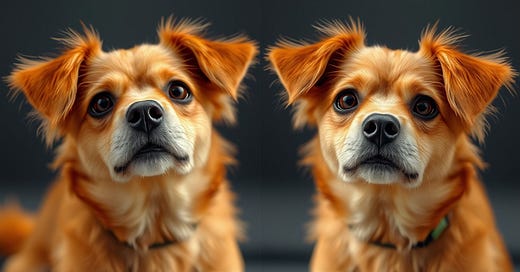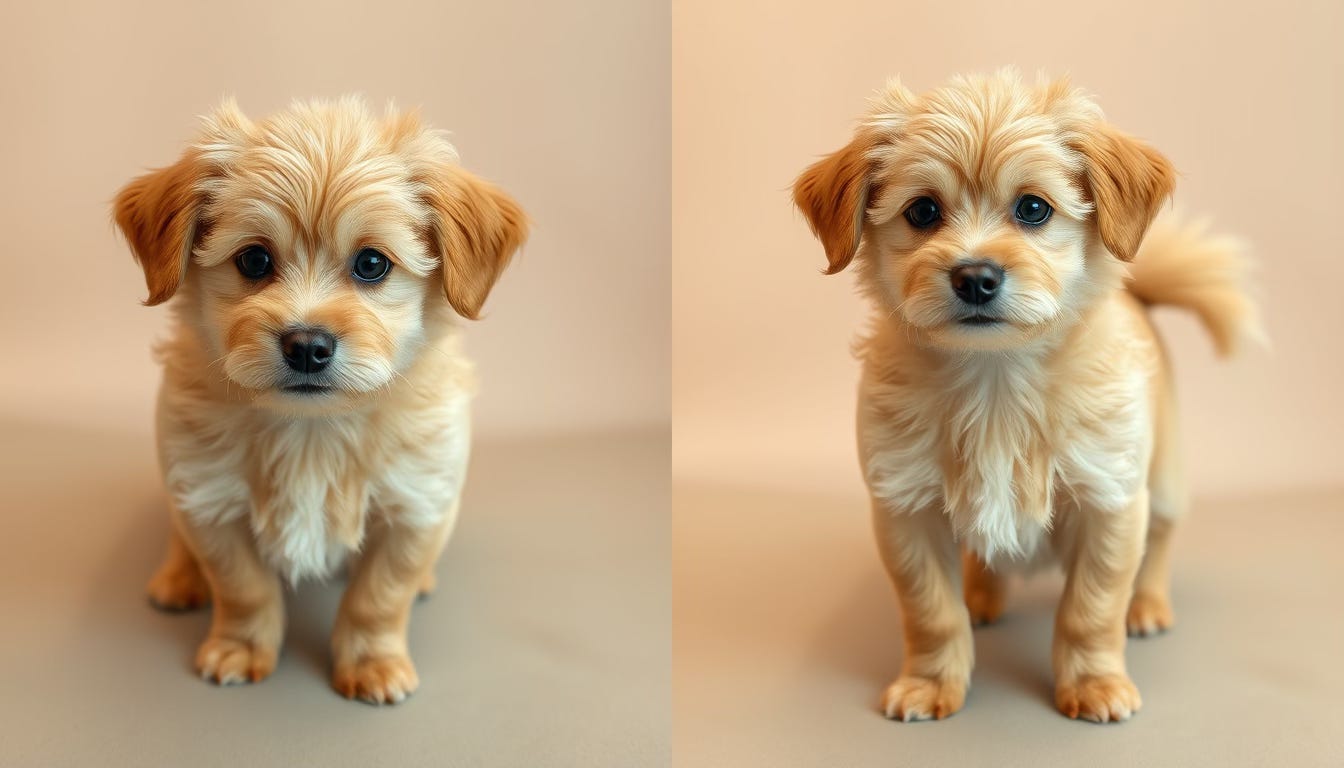Are Your AI Prompts Limiting Results? See the Proof in One Test.
Care and feeding of AI prompts
Need a quick lesson in prompt quality? In this quick demonstration, I'm using a free image creation tool from There's An AI For That TAAFT) to create a super-simple demonstration of the difference in results you will get from an overly simple prompt and a more complete one.
Weak prompt: Create a photorealistic before-and-after haircut image of a small tan dog.
Result: Two identical photos—both look like an untrimmed Golden Retriever.
There is no difference between the before and the after images. That is a dog the color of a Golden Retriever.
Why it flopped: I starved the AI of details, so it had no clue what should change.
Strong prompt:
Create a photorealistic before and after haircut image of a small tan dog. In the first shot the dog is very fluffy, almost like a miniature Golden Retriever. In the second, its coat is neatly clipped short—except for a still-fluffy tail. Show the full body in both images.
Result: A clear side-by-side: shaggy pup ➜ freshly groomed pup.
Lesson: Talk to an AI the way you’d brief a human assistant: specific cues in, specific results out.
Why this works
Specificity fuels accuracy. The second prompt names coat length, body shot detail, tail detail and color, so the AI has anchor points.
Structured requests reduce ambiguity. Breaking the ask into before and after states guides the image model’s internal “shot list.”
Inviting follow-up questions prevents misfires. I end with: “What else do you need to nail this?”
Quick image prompt-writing checklist
Subject & context – Who/what and where?
Key attributes – Colors, sizes, moods, angles.
Desired change or outcome – Before vs. after, day vs. night, etc.
Composition cues – Full body, close-up, landscape, portrait.
Ask for clarifications – “What’s missing?”
For additional techniques and prompting examples, read my post How To Write An Effective AI Prompt.





